Planning a bathroom renovation can be both exciting and daunting, especially when it comes to budgeting for the project. Understanding the average costs involved is crucial for making informed decisions and ensuring your renovation stays within your financial means. In this comprehensive guide, we delve into the intricacies of bathroom remodeling expenses across the United States.
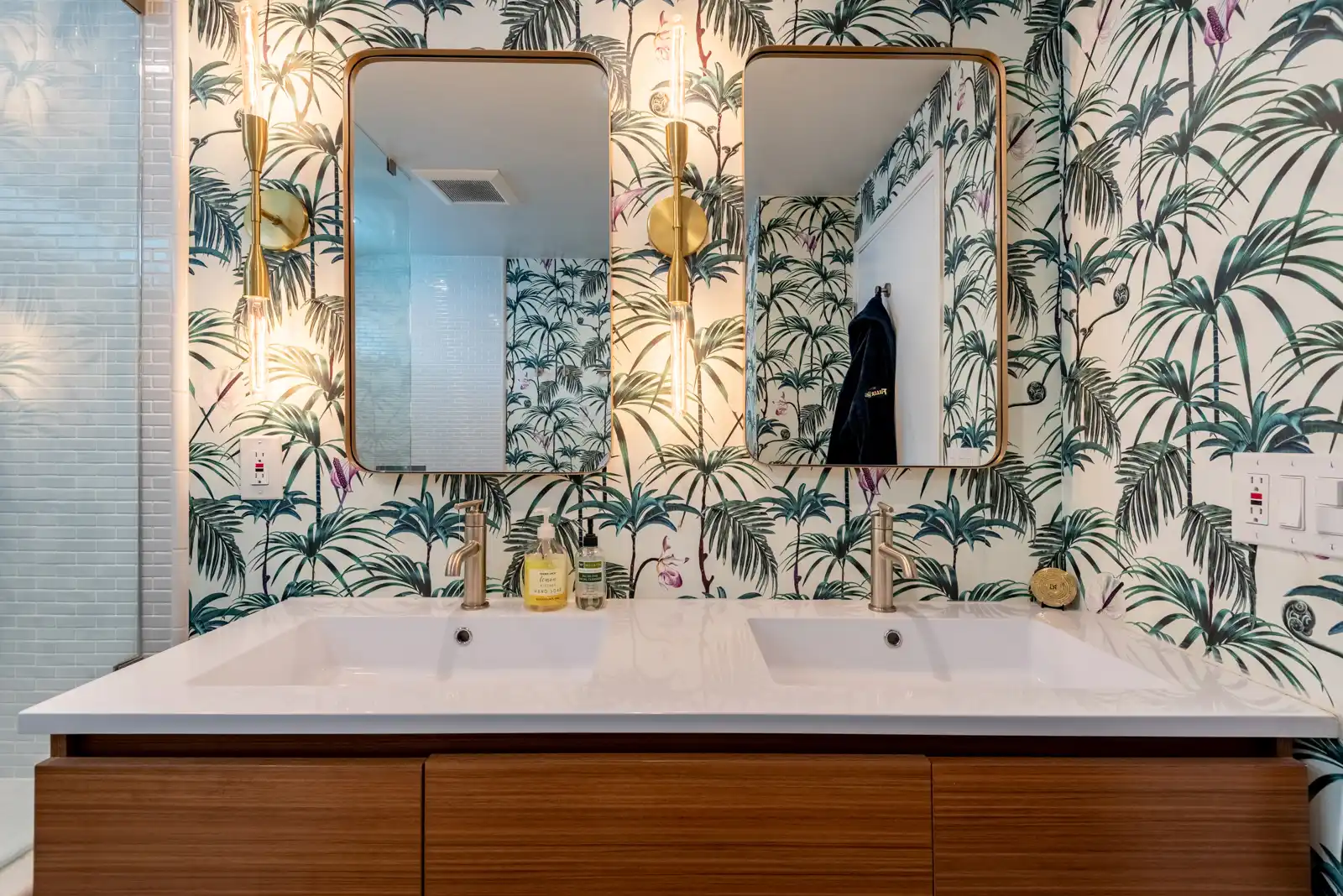
- Size: How dimensions affect your bathroom remodeling costs
- Finish level: How bathroom design can affect your budget
- Scope: Rip-and-replace vs. gut bathroom remodeling
- Services: Bathroom remodeling services and their impact on costs
From material costs to labor fees and everything in between, we’ll provide you with valuable insights and practical tips to help you navigate the process with confidence. Additionally, with Sweeten’s extensive network of reputable general contractors spanning various locations, finding the perfect partner for your renovation journey has never been easier. Let’s embark on this transformative endeavor together and create the bathroom of your dreams without breaking the bank.
- Budget full bathroom renovation costs: Starts at $16,000
- Mid-grade full bathroom renovation costs: Starts at $22,500
- High-end full bathroom renovation costs: Starts at $31,000
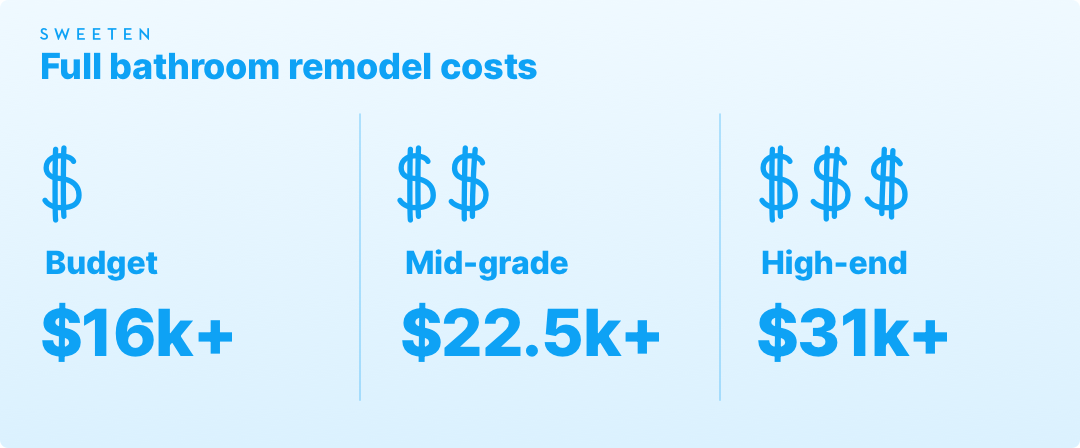
We want you to be completely prepared for the cost of your home remodeling project, so our pricing estimates are inclusive of all materials, labor, overhead, and a standard general contractor’s margin.
If you live in a major metropolitan area, prices will be higher than national averages, so we’ve compiled local bathroom remodeling costs for major cities and the New York tri-state area.
Start your renovation
Bathroom remodeling costs in some major US cities
Discover our breakdown of bathroom remodeling costs for some major US cities, revealing the unique factors shaping renovation expenses. From New York to Los Angeles and beyond, discover average costs to budget effectively for your project. Whether planning a modern upgrade in Chicago or a cozy renovation in Atlanta, our insights empower informed decisions on transforming bathrooms across vibrant urban landscapes
- New York
- Los Angeles
- Washington DC
- Chicago
- Houston
- Atlanta
- Boston
- Miami
Size: How dimensions affect your bathroom remodeling costs
Size does matter when it comes to remodeling costs, but it’s not just about square footage. Imagine a spacious bathroom in a chic Manhattan loft versus a cozy powder room tucked beneath a quaint cottage staircase. The difference in style, location, and layout can dramatically influence renovation costs. Think beyond mere dimensions; consider the intricacies of fixtures and finishes. Each sink, shower, and toilet is not just a functional element but a brushstroke on the canvas of your dream bathroom.
Half bathrooms (powder rooms): These intimate spaces, found in homes from West Coast to East Coast, typically feature a sink and toilet, with fixture counts ranging from 1 to 2. Positioned strategically near entryways or communal areas, they provide guests with a discreet haven. Despite their compact size, powder rooms in urban homes exude sophistication, often incorporating high-quality elements to make a stylish statement within limited dimensions.
Full bathrooms: Comprising a sink, toilet, and either a bathtub or shower, with fixture counts averaging 3 to 4, full bathrooms in city dwellings serve as versatile canvases for diverse design styles. Within the confines of many metropolitan residences, renovation plans prioritize ingenious space utilization, integrating space-saving fixtures and clever storage solutions. Whether in a loft apartment in New York City or a bungalow in Los Angeles, each full bathroom reflects the homeowner’s individuality, harmonizing personal taste with urban sensibilities.
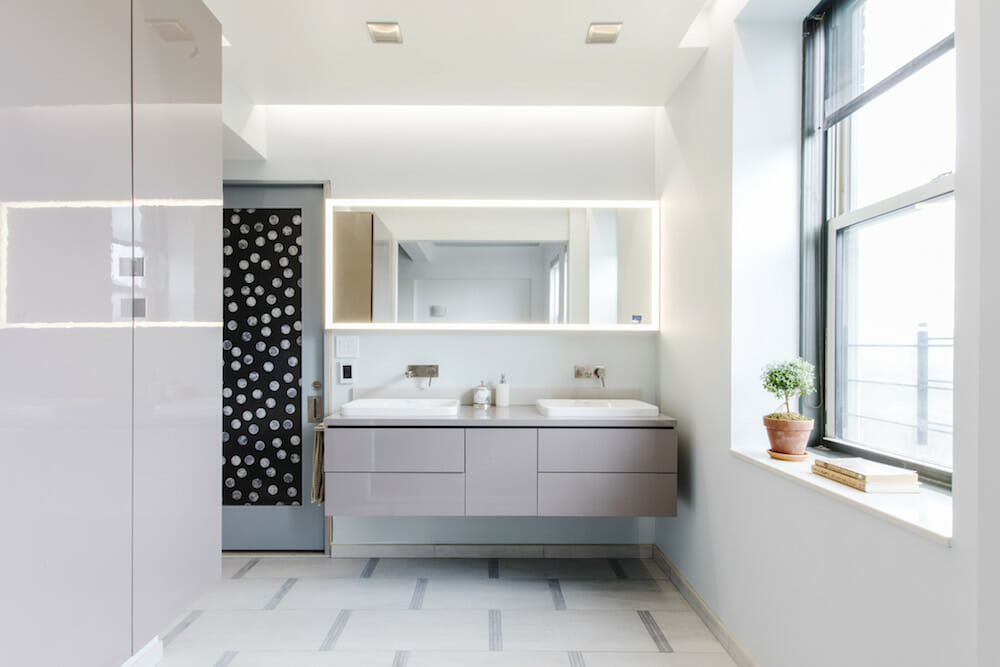
Primary bathrooms (master bathrooms): Defined by a spacious vanity area featuring two sinks, alongside a toilet and either a bathtub or shower, primary bathrooms typically boast fixture counts of 4 to 5. In upscale residences across the country, such as those in prestigious neighborhoods in Dallas or Atlanta, primary bathrooms epitomize refined luxury, showcasing premium fixtures and finishes that seamlessly blend aesthetic appeal with functional elegance. Renovations often focus on bespoke customization, enabling residents to craft serene retreats tailored to their tastes and lifestyle preferences.
Deluxe primary bathrooms: Distinguished by dual sinks, an expansive vanity, a generously proportioned shower or separate bathtub, and a toilet, fixture counts for deluxe primary bathrooms typically exceed 5. Every detail, from custom cabinetry to cutting-edge fixtures, converges to redefine the art of bathing in urban and suburban homes alike. Whether in a sprawling mansion in Beverly Hills or a waterfront estate in Miami, deluxe primary bathrooms capture the essence of aspirational lifestyles across the nation, showcasing opulence and comfort in equal measure.
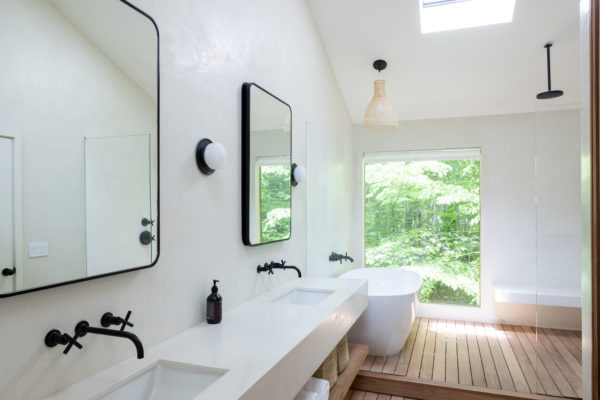
For any size bathroom, a wide range of bathroom fixtures is available, from budget to ultra-luxury. Your style preference, budget, and the space’s size will determine the suite of fixtures needed, including a sink, vanity, faucet, toilet, shower head, bathtub, and accessories. The low end of fixtures for a small bathroom is $1,500, and fixtures can run upwards of $15,000.
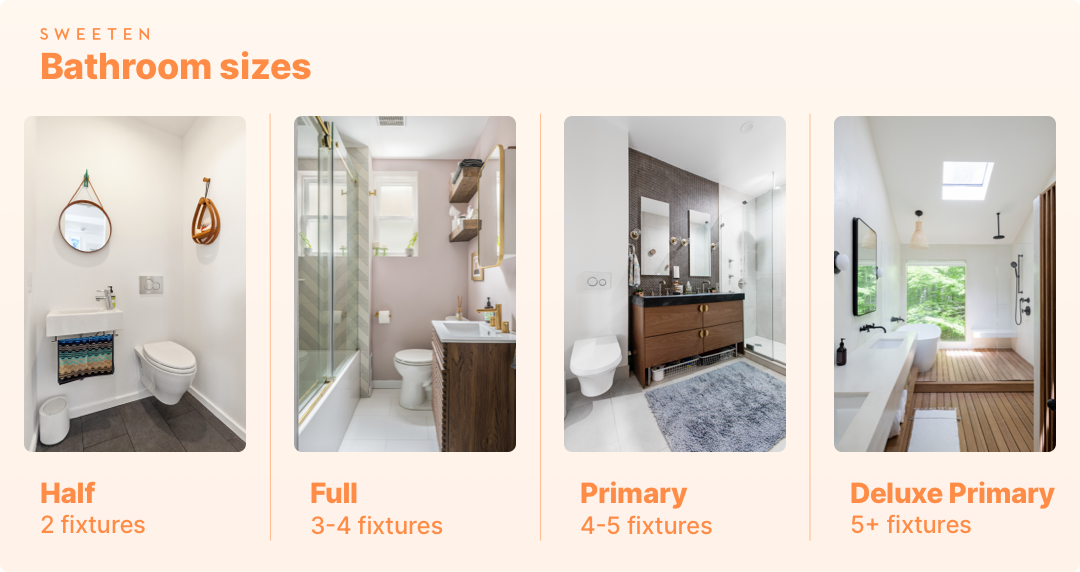
Finish level: How bathroom design affects remodeling costs
Finish level refers to the overall quality and price tier of fixtures, materials, and finishes utilized in your project. This encompasses wall treatments, vanity materials and fabrication, flooring selections, as well as the brands and models of sinks, faucets, and fixtures chosen. Opting for a higher finish level typically results in accelerated costs.
Budget finish: In cities like Atlanta, budget-conscious homeowners often turn to affordable materials sourced from popular “big box” stores such as Home Depot or IKEA. Stock vanities and tiles priced under $5 per square foot, including brands like Pergo and Daltile, are common choices. Fixtures from trusted brands like Delta, Moen, and Pfister offer affordability without sacrificing functionality, ensuring practicality in everyday use.
Mid-grade finish: Balancing cost-effectiveness with material quality, mid-grade options find favor in the discerning homes of cities like Chicago. Vanities from Design House, Fresca, and Signature Hardware bring a touch of sophistication, complemented by tiles sourced from reputable suppliers like TileBar. Popular brands such as American Standard, Hansgrohe, and Kohler enhance these spaces, offering a harmonious blend of affordability and refinement.
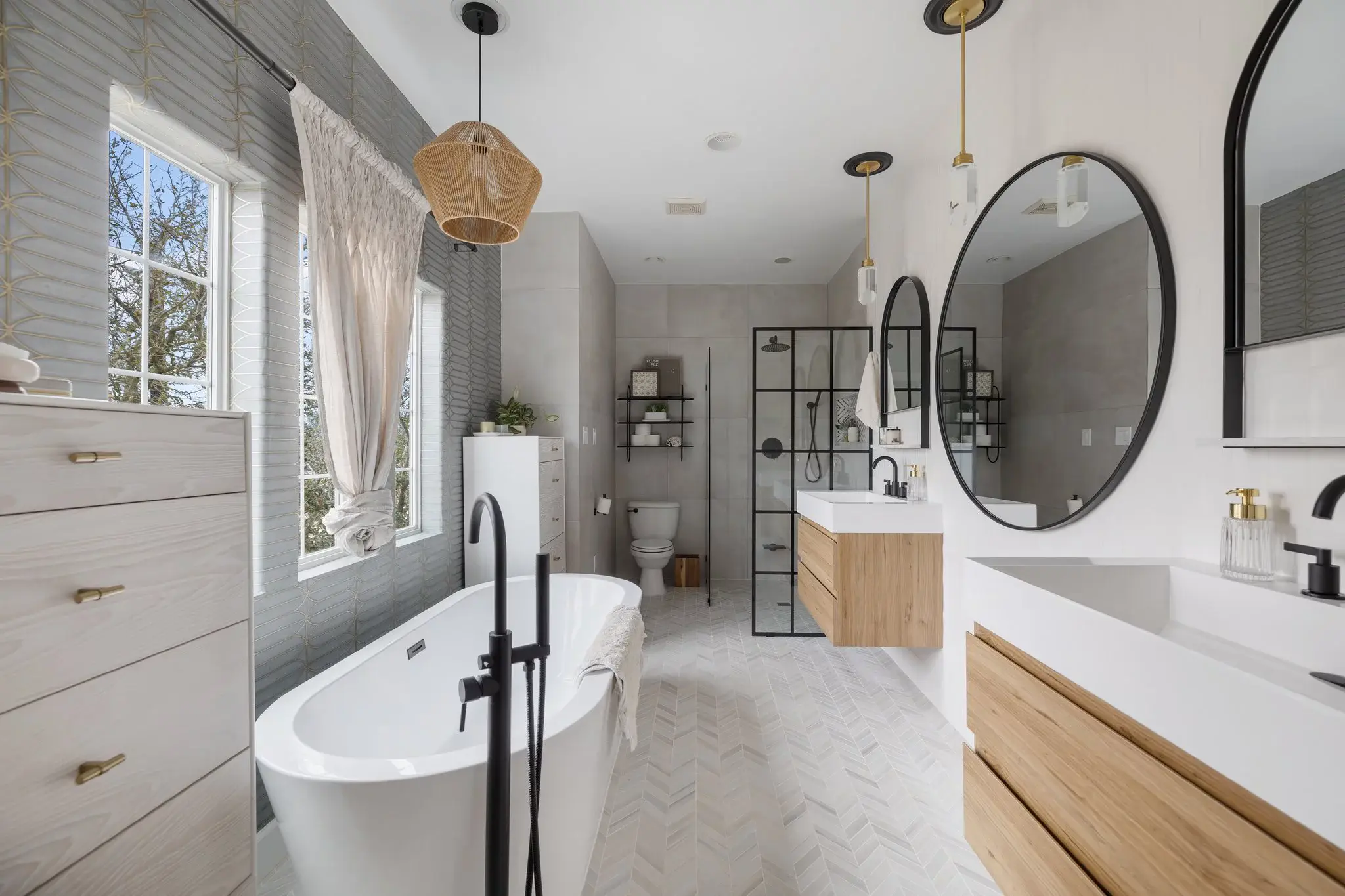
High-end finish: In cities like San Francisco, high-end materials reign supreme in the most refined homes. Elite suppliers like Clé Tile, Ann Sacks, and Artistic Tile provide tiles that transform spaces into artistic masterpieces. Vanities from esteemed brands like Duravit, Robern, DXV, and TOTO exude elegance, while fixtures by Kallista, Brizo, and Grohe add a touch of luxury to daily routines, reflecting the refined tastes of the city’s elite homeowners.
Luxury finish: In cities like New York City, luxury renovations reach unparalleled heights. Brands such as Lefroy Brooks, THG Paris, and Samuel Heath epitomize craftsmanship and materials that exceed ordinary expectations. Every detail exudes opulence, offering a glimpse into a world where luxury knows no bounds, reflecting the sophisticated tastes and extravagant lifestyles of the city’s elite.
By understanding the different finish levels and their associated costs, homeowners across the US can make informed decisions when planning their bathroom renovations. Whether aiming for budget-friendly updates or indulging in luxury transformations, there are options to suit every style and preference, ensuring that your bathroom reflects your personal taste and lifestyle.
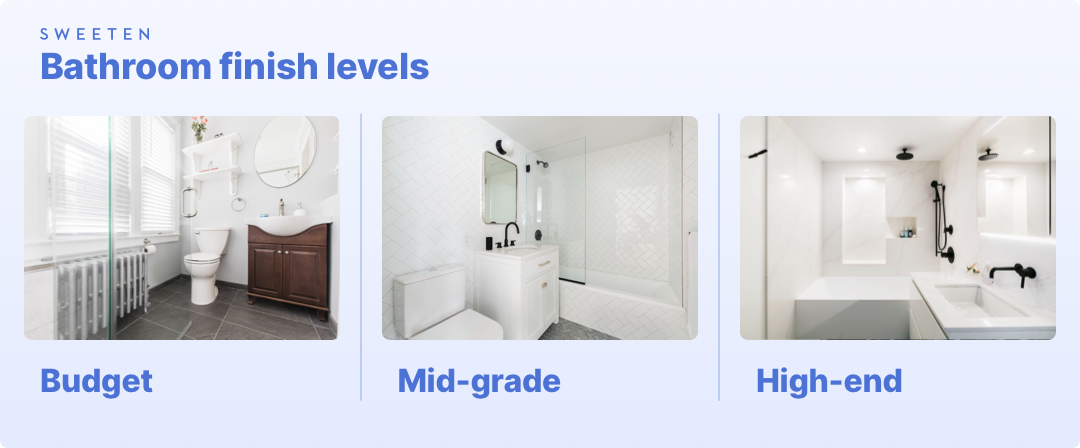
Scope: Rip-and-replace vs. gut bathroom remodeling
Project scope refers to the amount and type of work that needs to be done, and can have implications on which professionals you’ll need to hire. We divide scope into the following broad categories (when a contractor prepares an estimate for your renovation, it will be much more detailed, and will include costs of the exact fixtures and finishes):
Full renovation (Rip-and-Replace):
A full renovation, also known as “rip-and-replace,” entails replacing all old fixtures and finishes with new ones while leaving everything in place. This approach maintains the same layout before and after the renovation, making it a more straightforward way to reimagine your space. In cities like Houston, homeowners often opt for this approach to update their bathrooms with locally-qualified general contractors.
Gut renovation (or “Reimagine” as we like to say at Sweeten)
On the other hand, a gut renovation involves more extensive changes, such as dropping walls, rerouting plumbing lines, and rewiring electrical systems. This transformative project typically entails stripping the room down to the studs and subfloor, or even removing these entirely, in order to change up the layout of the space. Cities with old housing stock like Boston often see homeowners opting for gut renovations to achieve a complete transformation of their bathrooms. Professional design or architectural services, permitting, and locally-qualified general contractors are essential for ensuring the work is done safely and to code. If you’re planning on converting your bathtub to a shower, these rules apply across the country.
By understanding the differences between rip-and-replace and gut renovations, homeowners across the USA can make informed decisions about the scope of their bathroom projects. Whether opting for a straightforward update or a complete transformation, there are options to suit every style and budget, ensuring that your bathroom renovation meets your needs and reflects your personal taste.
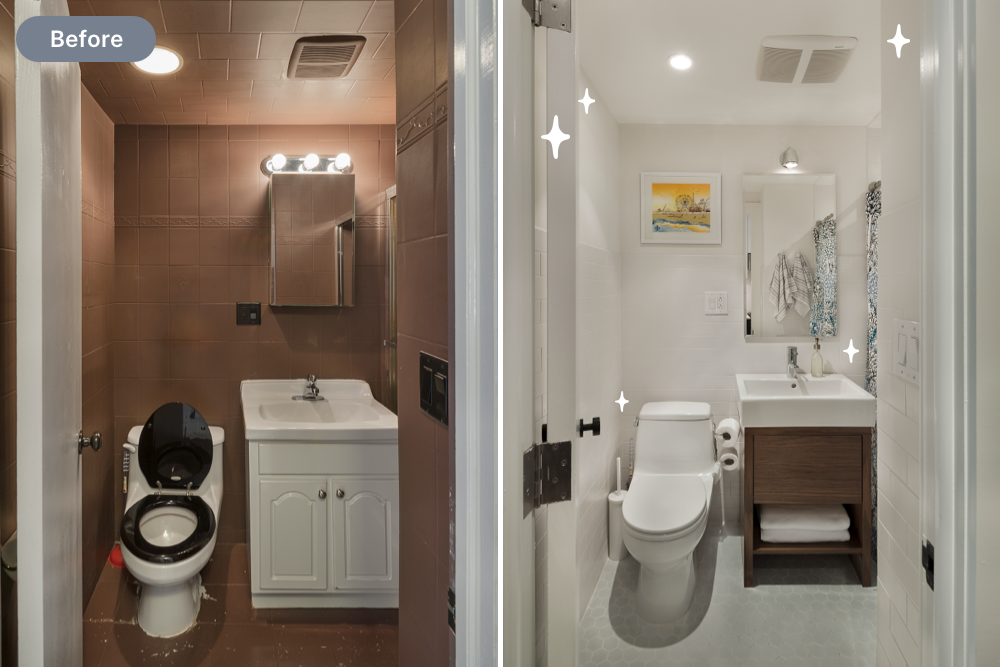
Services: Bathroom remodeling services and their impact on costs
The two main services to consider for your bathroom renovation are build service and design service. Depending on your needs, you have some options for what types of firms to hire.
Build service with a general contractor
Starting a remodeling project, one of the crucial decisions you’ll make is selecting a general contractor to bring your vision to life. Across the United States, general contractors offer a spectrum of build services, ranging from demolition to construction. Some contractors specialize solely in build services, while others provide comprehensive design and build solutions.
In states like California, where urban renewal projects are common, general contractors often collaborate closely with architects and city planners to ensure compliance with local building codes and regulations. For instance, firms in Los Angeles might specialize in adaptive reuse projects, repurposing old buildings for modern uses while preserving their historical charm.
In contrast, states like Texas, known for rapid urban development, witness a high demand for residential and commercial construction. General contractors in cities like Houston or Dallas frequently offer build services tailored to the needs of expanding neighborhoods and growing businesses.
Regardless of location, the competitiveness of a contractor’s pricing is influenced by factors such as experience, service level, and firm size. Homeowners and businesses are encouraged to connect with multiple contractors to find the best fit for their project requirements and budget constraints.
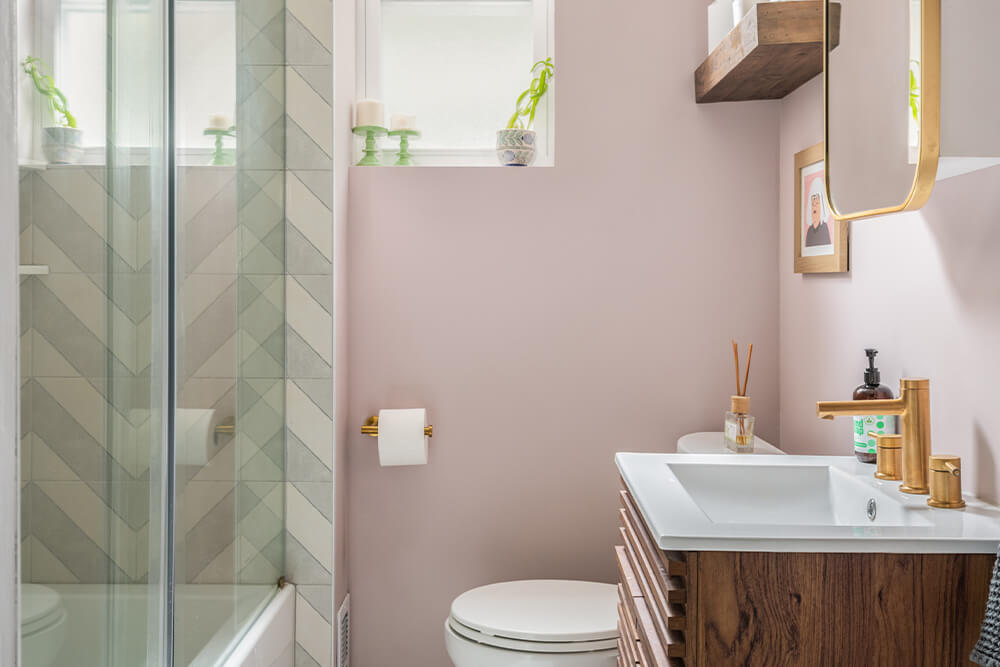
Design service with an architect or interior designer
Design services play a pivotal role in shaping the aesthetics and functionality of a construction project. Collaborating with an architect or interior designer opens up a realm of creative possibilities, allowing individuals to reimagine their spaces in innovative ways.
In states like New York, renowned for its architectural marvels, firms specializing in creative design services thrive. Architects in New York City, for example, are sought after for their expertise in maximizing limited space and blending historical preservation with contemporary design.
Similarly, in states like Florida, where luxury residential developments are prevalent, interior designers excel in creating opulent yet functional living environments. From Miami to Palm Beach, design firms cater to affluent clientele seeking bespoke solutions for their homes.
Technical design expertise, crucial for projects requiring permits and adherence to building codes, is often provided by architects or structural engineers. This aspect is particularly significant in earthquake-prone regions like in California along the San Andreas fault line, where structural integrity is paramount in construction projects.
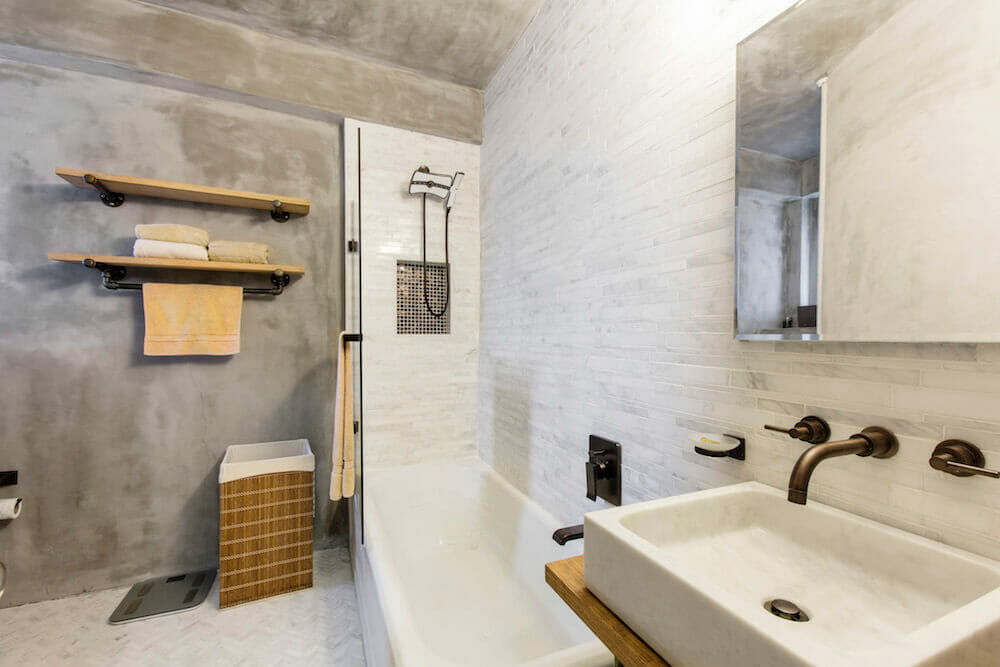
Full-service, design-build firms
For those seeking a seamless and efficient construction experience, the option of a full-service design-build firm presents itself as an attractive solution. These firms, combining professional design and construction expertise under one roof, offer a streamlined process from conception to completion.
In states like Colorado, where sustainable building practices are prioritized, design-build firms specialize in eco-friendly construction solutions. From solar-powered homes to LEED-certified commercial buildings, these firms integrate environmental considerations into every aspect of the design-build process.
In the Midwest, states like Illinois see a rise in demand for design-build services, particularly in the commercial sector. Firms in Chicago and its suburbs leverage the collaborative approach of design-build to deliver cost-effective and time-efficient solutions for office buildings, retail spaces, and industrial facilities.
By opting for a design-build approach, clients benefit from enhanced coordination between design and construction teams, leading to smoother project execution and potentially cost savings. This integrated model fosters a cohesive working relationship, ensuring that the client’s vision is realized with precision and efficiency.
In conclusion, whether you choose to work with a general contractor, enlist the expertise of an architect or interior designer, or opt for a full-service design-build firm, understanding the nuances of each approach is essential for a successful construction project. By considering factors such as location, project requirements, and budget constraints, individuals and businesses can make informed decisions that align with their vision and goals.
Are you ready to start your own bathroom remodeling project?
Post your remodeling project on Sweeten and we’ll connect you with a curated list of trusted contractors, matched to your project. Our service is free for homeowners, and hiring your contractor with Sweeten means you will receive guidance, tools, and support during your project. Check out our service locations to see if we cover your area.
Renovate to live, Sweeten to thrive!
Post your renovation on Sweeten
Bathroom remodeling cost guides
City guides:
- Bathroom Remodeling Costs in New York City
- Bathroom Remodeling Costs in Los Angeles
- Bathroom Remodeling Costs in Chicago
- Bathroom Remodeling Costs in Miami
- Bathroom Remodeling Costs in Boston
- Bathroom Remodeling Costs in Philadelphia
- Bathroom Remodeling Costs in Washington DC
- Bathroom Remodeling Costs in Houston
- Bathroom Remodeling Costs in Dallas
- Bathroom Remodeling Costs in Atlanta
New York tri-state area bathroom remodeling cost guides:
- Bathroom Remodeling Costs in New Jersey
- Bathroom Remodeling Costs on Long Island
- Bathroom Remodeling Costs in Westchester County
- Bathroom Remodeling Costs in Fairfield County
FAQs about bathroom remodeling costs in the US
The process of remodeling a bathroom brings up endless questions, so we’re answering some of your most common curiosities about the costs of bathroom renovations here. Have more questions? Leave them in the comments section below!
The final cost of a bathroom remodel will depend on the size of your bathroom, the quality of fixtures and finishes, and whether any plumbing fixtures will be moving or changing. According to national averages, for a typical, full bath, a full rip-and-replace bathroom remodel will range from $16,000 to $56,500 and up, depending on finishes. This estimate includes all materials, labor, overhead, and a standard general contractor margin.
A major gut bathroom remodel would add an additional 15-25% to the total cost of materials and labor for the same square footage.
Demolition signifies the start of a renovation and is one of the quickest parts of the process to complete. Bathroom demolition costs are typically tied to the square footage of what is being removed. Usually, bathroom demolition costs start at $34 per square foot, but can be more depending on what needs to be removed.
The cost of labor for a bathroom remodel goes towards the renovation crew, behind-the-scenes administrative employees, and subcontractors. Generally, the cost of labor is dependent on a project’s complexity, size, and location. According to national averages, the labor portion of a bathroom remodeling project usually adds up to around 25-35% of the total project cost, give or take.
Generally speaking, labor will make up a larger portion of total cost for a bathroom project with budget-grade materials, and a lower portion of the total for high-end materials. The addition of any highly specialized labor (beyond standard) will cost more.
Permit requirements vary between states and local municipalities, so be sure to check your local requirements. Often, permits are needed for bathroom projects if any plumbing, electrical, or mechanical elements will be moved, or if load-bearing walls are being moved or coming down. This can also include converting a tub to shower, or vice versa, due to plumbing implications.
If you need a permit for your bathroom remodel, the costs can be calculated as a flat rate for specific scopes of work or as a percentage of the cost of the project. In some areas remodeling permit costs might be as high as 10%, but it’s usually less.
The purchase of tile is only part of the budget to tile a bathroom. There is cost to prepare the space for tiling where items such as baseboards and the toilet are removed. Raw materials, such as subflooring and thin-set, are required for the job. Installation and labor costs factor into the final tiling budget. The total average cost to tile a bathroom ranges from $23 to $68 per square foot.
The cost to replace a bathroom vanity includes preparation of the worksite, raw materials, and labor. Depending on the scope of work, the cost increases if plumbing and electrical systems are relocated or if they need to be brought up to code. The materials chosen based on price point will also factor into the budget. The average cost ranges from $370 to $3,000, however, for high-end and custom work, the total cost of replacing a vanity can run even higher.
A walk-in shower can cost anywhere between $2,000-$15,000. This includes installation, plumbing, fixtures, and kits. Leaving the plumbing where it is will be less expensive than if water sources are moved (like when converting a tub to a shower).
The cost will also vary depending on the price point of the tile chosen. Standard ceramic tile can start at just $1.50 per square foot while marble tile is closer to $50 per square foot. Add a standard overage amount of at least 10%. Running short of tile will cause delays and incur more costs.
Vinyl flooring is a solid option for bathroom flooring with its budget-friendly, waterproof, and durable qualities. Also called resilient flooring, vinyl has some give to it when standing for long periods of time or when little ones fall. Vinyl flooring comes in planks or as a sheet with no seams—a plus for messy wet bathrooms. The material is easy to install and can be laid over an existing floor. The total cost to install sheet vinyl flooring in a bathroom is approximately $59-$65 per square foot.
The bulk of your bathroom remodeling costs will be tied to the total number of fixtures, and the quality of the fixtures and materials you choose. A small full bathroom with 3-4 fixtures and a large full bathroom with 3-4 fixtures, might cost close to the same because the only difference will be in square footage of flooring and wall treatments. On the other hand, a half bathroom with only 2 fixtures, a sink and toilet, will cost considerably less than a full bath renovation with 3-4 fixtures.
According to national averages, the cost for a typical half bathroom remodel can range from $6,500-$20,500 and up; whereas the cost for a full, rip-and-replace remodel of a standard full bathroom can range from $16,000-$56,500 and up, depending on finish level of the materials used. A major gut renovation for a bathroom of the same size would add an additional 15-25% to the total cost of materials and labor.
Your general contractor can give you an idea of possible issues that may arise during a bathroom remodel in your area, based on the age and type of home they’re working on. However, a contractor cannot price out every possible problem, as things can arise after walls are broken into. They may discover an issue with your plumbing or electrical, for example.
Major projects often involve permitting fees, and change orders after a contract has been signed can also add to the overall cost. To protect yourself from unseen costs, set aside a 10-15% contingency budget for a non-gut renovation. If you are planning a gut remodel, set aside 15-20% for issues that come up along the way. Having a monetary cushion will keep your remodeling project on track.
Bathroom remodeling costs across the US are primarily influenced by factors such as labor rates, material prices, project scope, and local regulations. Additionally, the level of customization, complexity of the design, and the need for specialized trades can impact overall costs.
Yes, homeowners nationwide often face challenges such as unexpected expenses, fluctuating material costs, finding reliable contractors, and navigating permitting requirements. Additionally, achieving the desired aesthetic while staying within budget can be a common concern.
In general, bathroom remodeling costs tend to be higher in urban areas due to higher labor rates, increased demand for skilled tradespeople, and higher overhead costs for contractors. Conversely, rural areas may offer lower labor rates but could have limited access to specialized materials and trades.
Cost-saving strategies applicable nationwide include planning and budgeting meticulously, prioritizing essential upgrades, sourcing materials from reputable suppliers, exploring DIY options for non-technical tasks, and obtaining multiple quotes from contractors to compare pricing.
While bathroom remodeling costs can vary significantly depending on the region, certain trends may be observed. For example, remodeling costs in coastal areas or major metropolitan areas tend to be higher than in rural or inland regions due to factors such as higher living expenses and stricter building codes.
Yes, there are federal and nationwide programs offering incentives to offset bathroom remodeling costs, such as tax credits for energy-efficient upgrades or grants for accessibility modifications. Homeowners can research programs like the Residential Renewable Energy Tax Credit or the Department of Energy’s Weatherization Assistance Program for potential savings.
Homeowners nationwide should budget for potential unexpected costs such as hidden water damage, structural issues, plumbing or electrical complications, and compliance with unforeseen building code requirements. It’s essential to allocate a contingency fund to address these unforeseen expenses without derailing the project.
To ensure transparency in bathroom remodeling costs, homeowners should obtain detailed written estimates from multiple contractors, clearly outlining labor, materials, and any additional charges. They should also communicate openly with contractors, ask questions, and clarify payment schedules and timelines upfront to avoid surprises. Additionally, researching average costs for similar projects in their area can provide valuable insights into pricing expectations.
—
Sweeten handpicks the best general contractors to match each project’s location, budget, scope, and style. Follow the blog, Sweeten Stories, for renovation ideas and inspiration and when you’re ready to renovate, start your renovation with Sweeten.
The post Understanding Bathroom Remodeling Costs in the US appeared first on Sweeten.
sweeten.com










